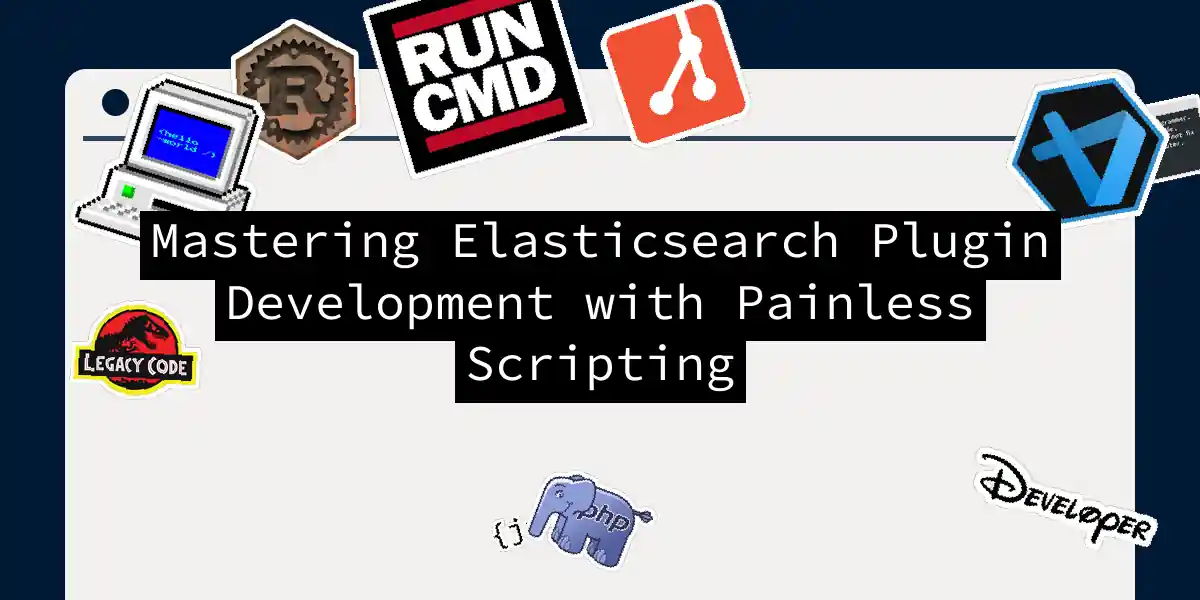Ever felt like Elasticsearch plugins were guarded by a dragon? Fear not – Painless scripting is your friendly knight in shining armor. As Elasticsearch’s default scripting language since version 5.0, Painless combines Java-like syntax with purpose-built features for plugin development. Let’s hack through the jungle together!
Why Painless for Plugins?
Painless isn’t just another scripting language – it’s Elasticsearch’s secret sauce optimized for:
- Security-first execution (no accidental
rm -rfdisasters!) - Java-like syntax (your Java muscle memory works here)
- 20x faster performance than Groovy scripts
- No-compile dynamic typing with
defkeyword magic
// Painless type declaration example
def calculateScore(Map params) {
double base = params.base;
double boost = params.boost;
return base * (1 + boost);
}
Crafting Your First Plugin
1. Plugin Skeleton Setup
Start with this Maven pom.xml:
<plugin>
<groupId>org.elasticsearch.plugin</groupId>
<artifactId>elasticsearch-plugin</artifactId>
<version>8.17.0</version>
</plugin>
2. Script Implementation
Create ScoreBoostPlugin.java:
public class ScoreBoostPlugin extends Plugin implements ScriptPlugin {
@Override
public ScriptEngine getScriptEngine(Settings settings) {
return new ScoreBoostEngine();
}
private static class ScoreBoostEngine implements ScriptEngine {
@Override
public String getType() {
return "score_boost";
}
@Override
public Object execute(...) {
// Our Painless script execution logic
}
}
}
3. Painless Script Integration
Register custom functions in plugin-descriptor.properties:
script=score_boost
Real-World Example: Sentiment Analyzer
Let’s create a plugin that boosts documents based on sentiment scores:
// sentiment_boost.painless
def calculate(Map params) {
double sentiment = doc['sentiment'].value;
double baseScore = params.base_score;
if (sentiment > 0.7) {
return baseScore * 2.0; // Double happy docs!
} else if (sentiment < 0.3) {
return baseScore * 0.5; // Sad docs penalty
}
return baseScore;
}
Query Usage:
{
"query": {
"function_score": {
"script_score": {
"script": {
"id": "sentiment_boost",
"params": {
"base_score": 1.0
}
}
}
}
}
}
Debugging Pro Tips
Painless scripts can be trickier than a Rubik’s cube! Try these:
- Simulate scripts in Kibana Dev Tools:
POST _scripts/painless/_execute { "script": { "source": "doc['price'].value * params.tax", "params": { "tax": 1.2 } } } - Secret logging (shh!):
def _debug = logger.debug; // Access logger instance _debug("Value: {}", doc['field'].value);
Performance Tuning
When your plugin runs slower than a Monday morning:
- Cache scripts using
script.context.score.max_compilations_rate=1000/1m - Avoid doc[] in loops – they’re like grabbing honey with bare hands!
- Use typed parameters instead of
deffor hot paths
Painless vs. Java Plugins
When to choose Painless over pure Java plugins:
| Scenario | Painless | Java Plugin |
|---|---|---|
| Quick field manipulation | ✅ 1-line scripts | ❌ Compile/deploy |
| Complex aggregations | ❌ Limited math | ✅ Full control |
| Security-critical ops | ✅ Sandboxed | ❌ JVM permissions |
| Schema changes | ❌ No index mapping | ✅ Full access |
Closing Thoughts
Painless scripting turns plugin development from “Why is this on fire?!” to “Look what I built!” – all without sacrificing performance or security. Remember: great plugins are like jokes; if you have to explain them, they’re not working!
Ready to experiment? Share your creations with #PainlessPlugins – may your scripts be bug-free and your relevance scores high! 🚀
